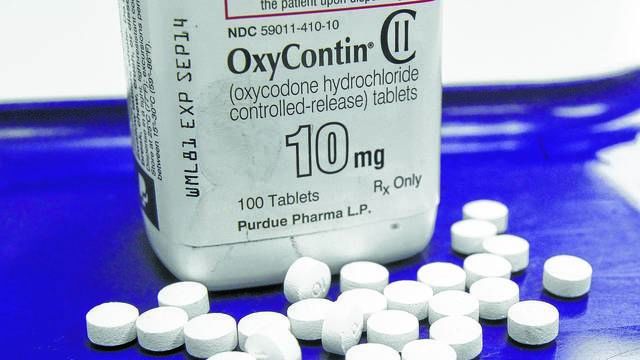Click here to subscribe today or Login.
A recent report from Blue Cross/Blue Shield suggests opioid abuse has dropped more quickly regionally than it has statewide, but that other areas in Pennsylvania are doing better.
The BC/BS Health of America opioid epidemic update only looks at data for members in the health insurance giant’s network. It was broken down by state, and for 264 “Metropolitan Statistical Areas,” including the Scranton/Wilkes-Barre/Hazleton MSA.
According to those numbers:
• The opioid prescription rate per 1,000 BC/BS members in 2013 was 584 for this MSA, above the national rate of 558. In 2017, the local rate had dropped to 403 per 1,000, but the national rate had dropped to 394.
Bottom line: the rate drop was bigger here, down 31 percent compared to a 29 percent national decline, even though the local rate remained above the national level.
• The Centers for Disease Control and Prevention has set guidelines to prevent opioid addiction, limiting both dose and duration of a prescription: Less than 50 “Morphine Milligram Equivalents” (MMEs) prescribed for fewer than eight days. Among BC/BS members who received their first opioid prescription in 2017, 67 percent were below that in the Scranton/Wilkes-Barre MSA, the same as the national rate. Among all who received a prescription in 2017, locally 46 percent were below the recommended guidelines, slightly better than the national rate of 45 percent.
• The report boils down the problem to “opioid use disorder diagnosis” per 1,000 BC/BS members for each MSA. Locally, that rate was 7.7 diagnoses per 1,000, considerably higher (worse) than the national average of 5.9 per 1,000.
Nationally, the highest rate for an MSA was in Anniston, Alabama, at 16.6 diagnoses per 1,000 BC/BS members. In fact, Alabama had five of the 10 worst rates for metro areas.
• Among the 14 MSAs completely or partially within Pennsylvania, the Scranton/Wilkes-Barre diagnosis rate of 7.7 per 1,000 is sixth highest. Pittsburgh tops the list at 9.6 per 1,000 while State College is at the bottom at 5.4 — making it the only MSA in the state that fell below the national average.
When it comes to reducing overall prescribing of opioids from 2013 to 2017, the Scranton/Wilkes-Barre/Hazleton area cut the number of prescriptions per 1,000 BC/BS members by 31 percent. While that’s a big improvement, it is the second smallest cut among the state’s 13 MSAs. Only Altoona had a smaller drop, down 28 percent. The biggest decline occurred in Erie with a 41 percent drop, matched by the Sharon MSA, south of Erie and north of Pittsburgh. Statewide, prescriptions dropped by 35 percent. Only 13 states had larger drops.
Highmark Health took advantage of the report and held a teleconference Thursday outlining efforts to reduce opioid use. Highmark acquired the 13-county Blue Cross of Northeast Pennsylvania territory several years ago.
Start with lowest dose
Highmark Chief Medical Officer Dr. Charles DeShazer outlined a multi-pronged approach that starts with alternative pain relief efforts including acupuncture, chiropractics and cognitive behavioral therapy to avoid opioids completely. If they are prescribed, the company looks to make sure the doctors “start with the lowest dose for the shortest duration,” and to make sure pharmacies limit quantity levels and prioritize the use of specific medicine strengths.
Highmark monitors for over-prescription and may refer suspecting incidence to “the appropriate credentialing agency and, when appropriate, to law enforcement.”
The third step is to provide support for folks impacted by the prior history of over-prescribing, to treat those “who have opioid use disorder and to reduce the negative impact on families and communities when someone develops this disorder.” That includes insurance that covers outpatient treatment without prior company authorization, he said.
“We know there is no silver bullet,” DeShazer added. “We want to make steady progress.”






